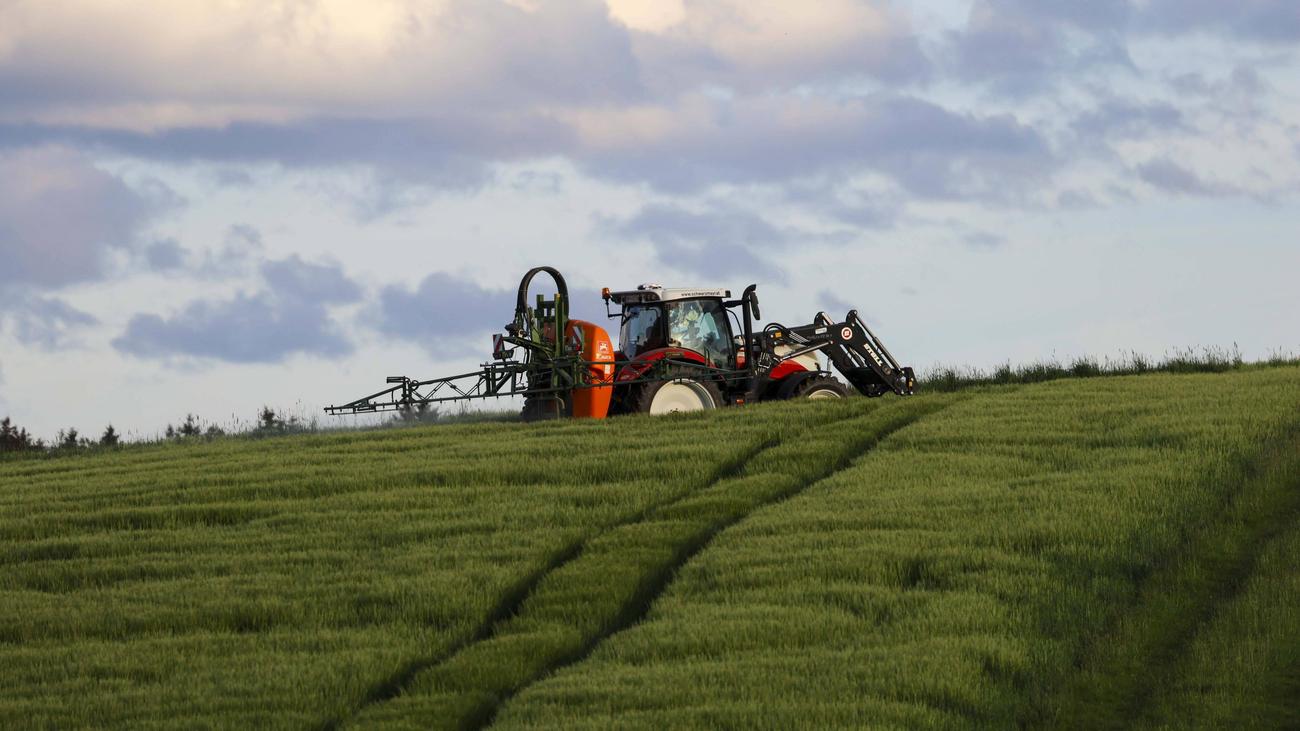Contents
Read content on one page
-
Page 1If the fertilizer tractor is tracked via GPS
-
Page 2″You have to develop further”
Bernd Bulich actually grows corn and wheat in the south of Cologne. An important part of his work takes place on the computer. To show how he protects groundwater, the farmer clicks through graphics, laboratory reports and interactive maps. His fertilizer tractor is tracked via GPS. It appears on the screen in the form of a field, divided into small squares. The darker the square, the more fertilizer was applied. Some parts of the field are very dark in color, others are very light.
Bulich only fertilizes where corn and wheat need nutrients. This is not a given. In Germany there is extensive over-fertilization, with consequences for the environment, health and drinking water prices.
The Cologne farmer not only enjoys working on the computer, he also goes beyond what the law requires him to do. Together with over 40 other farmers, Bulich cooperates with the water supplier RheinEnergie. Together they prevent groundwater from being polluted with too much nitrate. They are already using methods that the new fertilizer law would require everywhere in Germany – if the Federal Council had not rejected it in July. The reason: Farmers are already “massively overburdened by bureaucracy”. A mediation committee should now find a solution.
For Bulich and RheinEnergie, however, the problem is not bureaucracy itself, but rather the wrong type of bureaucracy.
In red areas everyone has to save nitrogen
Since 2020, stricter rules have applied to nitrate-contaminated regions, and apply to all farmers there. If a measuring point in a groundwater body has nitrate values of over 50 milligrams per liter, the entire region is designated as a so-called red area. A groundwater body is huge. Some of it has a diameter of 20 to 30 km and includes several towns and farms. All farmers in this area must save 20 percent nitrogen, regardless of whether they have fertilized as needed by then or not.
© Lea Dohle
Newsletter
“What now?” – The daily morning overview
By registering you take the Privacy Policy to note.
Thank you! We have sent you an email.
Check your mailbox and confirm your newsletter subscription.
To the left of the Rhine, between Cologne and Bonn, there is a red area because vegetables are intensively grown there. Only part of the red area lies within RheinEnergie’s area of influence, where there are around 20 milligrams of nitrate per liter of water. Stefan Schiffmann, head of the resource security department at RheinEnergie, would therefore like to see the local knowledge of water suppliers given greater consideration.
This would be possible under the much-maligned fertilizer law. Farmers would have to submit nutrient balances to the authorities, i.e. how many nutrients they have added to the soil in the form of fertilizer and how much the plants have removed from it. That would have advantages for some farmers, says Falk Hilliges, fertilizer expert at the Federal Environment Agency. Because then “only farmers who fertilize too much or not in accordance with their needs” could be affected by the measures. The principle is called polluter-pays assessment. Under today’s rules, however, entire regions are penalized.
The Cologne farmer Bernd Bulich © private
Bulich’s farm lies to the right of the Rhine, above another body of groundwater. Therefore it is not affected by the strict fertilizer rules. That’s his luck. If you don’t fertilize enough, the plants will draw the nitrogen they need to grow from the humus. As a result, the humus is broken down, which is bad for the soil quality and the climate, because humus stores CO₂. Another disadvantage: Wheat does not produce enough protein without sufficient fertilizer and therefore does not reach the necessary quality to be used as flour for baking bread. Farmers can only sell the wheat as animal feed, which brings in less money.
What’s the problem with nitrates?
Nitrate is a nitrogen compound. Plants need nitrogen to grow and get it from the soil. In order to ensure a consistent harvest, farmers have to return the extracted nitrogen to the soil in the form of manure, digestate or synthetic fertilizer. However, if more fertilizer is used than the plants need to grow, excess nutrients flow into the environment. In lakes and seas, an excess of nitrogen leads to eutrophication; The resulting lack of oxygen causes fish to die and species diversity to decline. There are already so-called dead zones in the Baltic Sea. Some of the excess nitrogen is converted into climate-damaging nitrous oxide, which contributes the most to global warming after CO₂ and methane.
Nitrate levels in groundwater have been falling slightly since 2020, but one in four measuring points still exceeds the legal limit of 50 milligrams of nitrate per liter, especially in areas with factory farming or intensive vegetable cultivation, as the 2024 nitrate report from the Federal Environment Ministry shows. Nitrate itself is non-toxic, but can be converted into harmful nitrite in the body. Too much nitrite hinders the transport of oxygen in the blood and is particularly dangerous for infants.
Bernd Bulich actually grows corn and wheat in the south of Cologne. An important part of his work takes place on the computer. To show how he protects groundwater, the farmer clicks through graphics, laboratory reports and interactive maps. His fertilizer tractor is tracked via GPS. It appears on the screen in the form of a field, divided into small squares. The darker the square, the more fertilizer was applied. Some parts of the field are very dark in color, others are very light.
Bulich only fertilizes where corn and wheat need nutrients. This is not a given. In Germany there is extensive over-fertilization, with consequences for the environment, health and drinking water prices.
